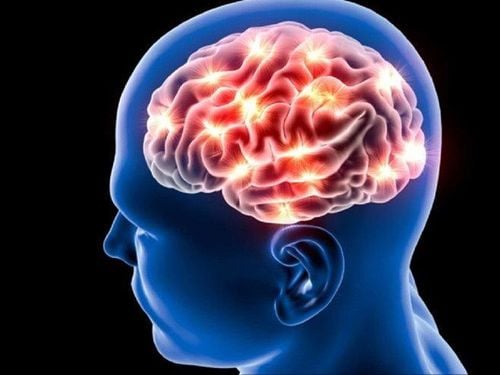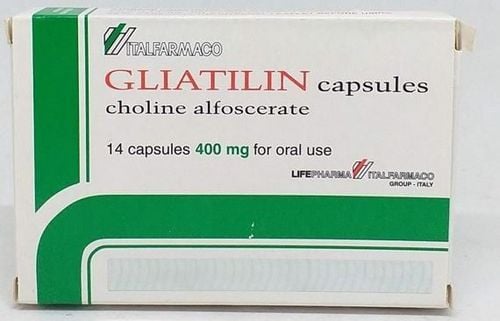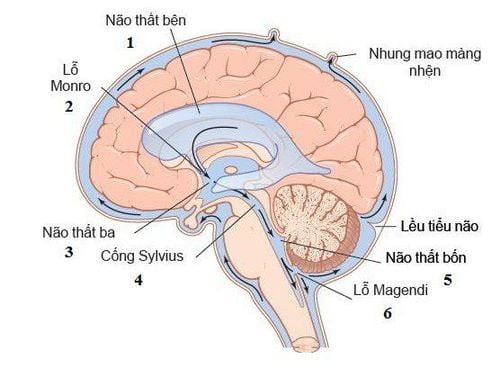This is an automatically translated article.
The article is professionally consulted by Master, Doctor Bui Tien Dat - Emergency Medicine - Cardiology - Emergency Resuscitation Department - Vinmec Hai Phong International General Hospital.Traumatic brain injury is one of the leading causes of death in the world as well as leaving many sequelae and unforeseen consequences for every family.
1. Is it okay to have a traumatic brain injury?
Traumatic brain injury is caused by any direct or indirect force applied to the head that damages the skull bones or other structures within the skull.Traumatic brain injury due to many causes such as traffic accidents, work accidents, daily life accidents, fights..., has a high mortality rate and leaves many severe sequelae for patients, unforeseeable consequences for the family and society.
Therefore, the detection of traumatic brain injury, correct and timely first aid is extremely important in limiting complications and minimizing mortality.
2. Golden hour in traumatic brain injury
For patients with traumatic brain injury, the 4-hour period from injury to surgery is the "golden time" to save the patient's life and reduce sequelae after traumatic brain injury.
Therefore, when having a traumatic brain injury, if the patient is detected early and operated in time, the chance of survival for the trauma patient is higher. If subjectively ignoring the golden time, the possibility of saving the remaining patient's life is very low or leaving severe sequelae.

3. Symptoms of traumatic brain injury
Bleeding is not a reliable indicator of the severity of a traumatic brain injury. In addition to the injury, other symptoms of a serious traumatic brain injury may include:
Changes in consciousness such as temporary loss of consciousness, confusion or lethargy. Victims may have brief convulsions. The victim's condition may improve for a moment and then worsen. Skull deformity - compression or deformity is a sign of a skull fracture. Clear fluid from the ear or nose - a skull fracture, especially a skull base fracture, can cause cerebrospinal fluid to drain from the ear or nose. Bruising of the eyes and skin behind the ears - the blood vessels around the eyes and ears are broken.
4. First aid for people with traumatic brain injury
In the event of a serious head injury, always call an ambulance.
4.1 First aid when conscious Encourage the injured person to minimize any movement of the head or neck.
The wound on the head may bleed a lot, in which case it is necessary to stop the bleeding by applying direct pressure and dressing. While examining the wound, avoid confusion with a blood clot that forms in the hair. Reassure the victim and try to keep them calm.
4.2 Give First Aid to Unconscious Victim Do not move the victim unless they are in critical condition. Any unnecessary movement can cause greater complications for the brain injury itself, the spine or other related injuries. As a rule of thumb, if the head is injured, the neck can be affected too. Therefore, it is necessary to immobilize the cervical spine for all traumatic brain injury patients who are comatose with specialized tools or other items available in place.
Your role is to protect the victim from any potential danger at the scene. You should also monitor the victim's airway and breathing until an ambulance arrives. If the injured person's breathing is impaired due to problems with the airway, it may be prudent to tilt their head back (and support) until breathing returns to normal. If the victim stops breathing or has no pulse, CPR may be needed.
Vision changes - copper from the eyes can dilate and vary in size in people with severe traumatic brain injury. Patients may experience double vision or blurred vision. Nausea and vomiting - these are common side effects of serious traumatic brain injury and should always be taken into account if it persists.
5. Prevention of traumatic brain injury

To prevent traumatic brain injury, each person should be conscious of equipping equipment in daily life such as:
Wear a helmet when participating in traffic by motorbike or electric bicycle; Fasten seat belts when driving; absolutely do not operate a vehicle while drinking alcohol; Do not let people drink alcohol carry; Obey traffic laws; there must be enough light in the house; avoid slippery floors, avoid leaving furniture indiscriminately on the floor, stairs; Keeping children and the elderly safe; Ensuring occupational safety, participating in sports... Vinmec International General Hospital is one of the hospitals that not only ensures professional quality with a team of leading medical doctors, a system of public equipment and facilities. modern technology, but also outstanding with comprehensive and professional medical examination, consulting and treatment services; civilized, polite, safe and sterile medical examination and treatment space.
Master. Doctor. Bui Tien Dat received intensive training in the field of cardiology and cardiovascular emergency resuscitation at Hanoi Medical University and Bach Mai Hospital. The doctor has more than 12 years of experience in the field of emergency and cardiovascular resuscitation and is currently a doctor at the Emergency Department of Vinmec Hai Phong International General Hospital.
If you notice any unusual health problems, you should visit and consult with a specialist.
Please dial HOTLINE for more information or register for an appointment HERE. Download MyVinmec app to make appointments faster and to manage your bookings easily.














